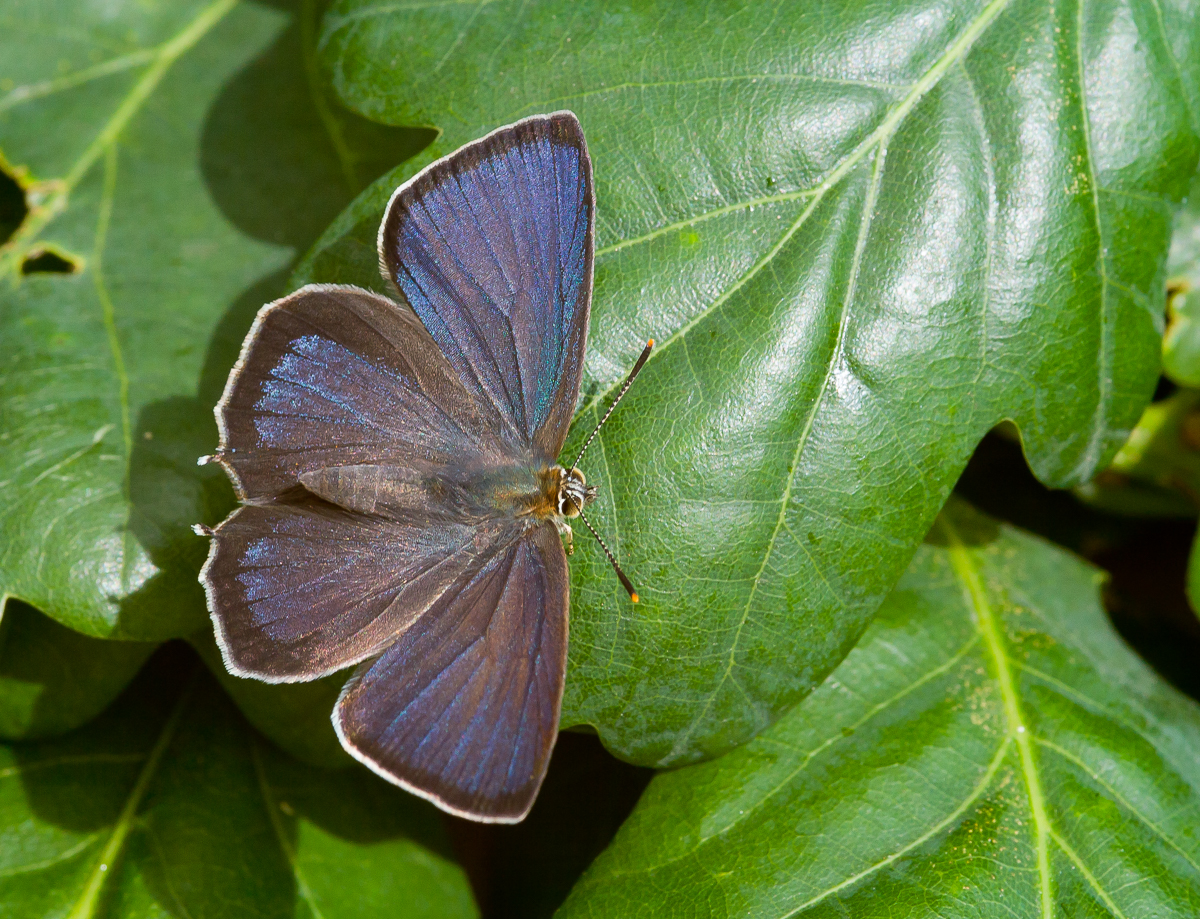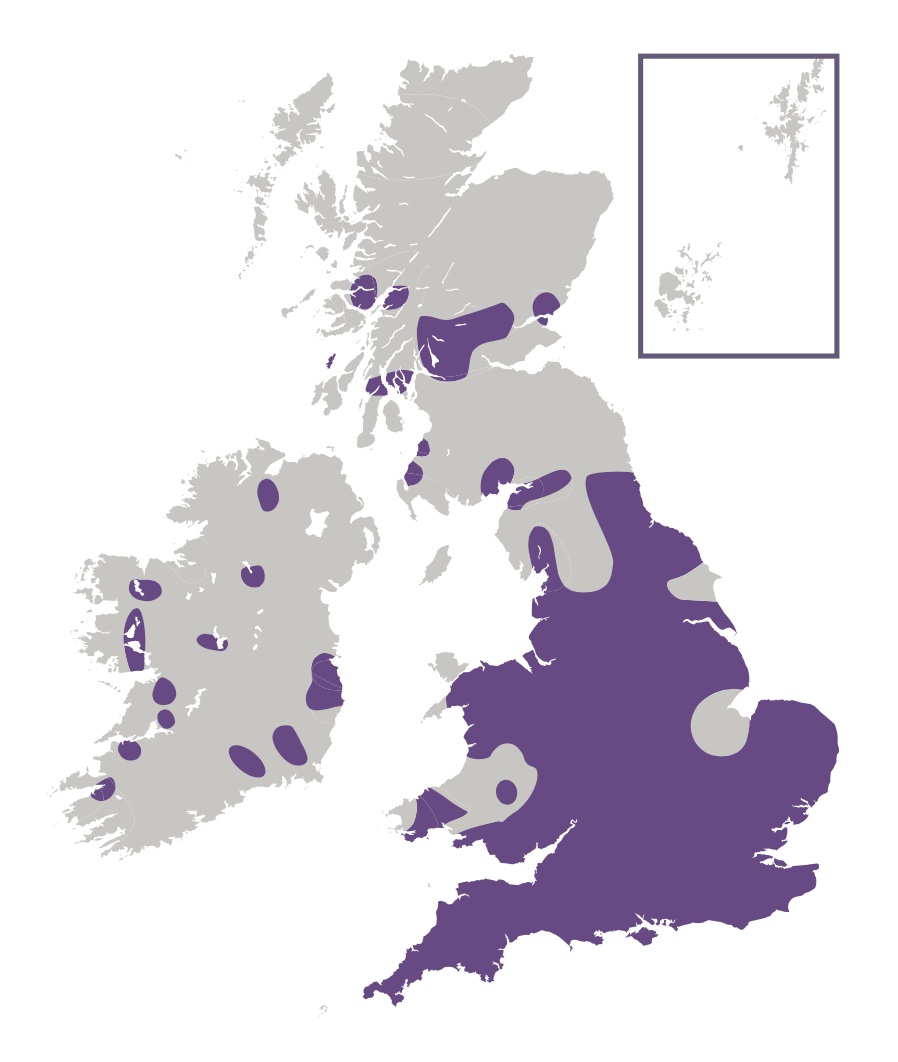
Photo © Peter Eeles
The Purple Hairstreak is our commonest hairstreak, and may be found in oak woodland throughout southern Britain, and more locally elsewhere. It is often difficult to locate, due to its habit of flying in the tree canopy, where it feeds on honeydew. However, the adults are occasionally seen basking at lower levels, on various small trees, shrubs and bracken. This butterfly is found across southern England and Wales, with scattered colonies further north. It is also found in parts of Ireland, mainly between Wicklow and South Kerry. This species is not found in the Isle of Man.
The Purple Hairstreak is one of the delights of summer, seen in oak woodland across the south of England, and more locally in other areas. It is particularly active in bright sunshine and, in the right woodland in early evening, this species can be seen in large numbers flitting around the tree canopy, and from tree to tree. Groups of several individuals chasing one another are not an uncommon sight. The butterfly primarily feeds on honeydew, but will occasionally feed from nectar sources such as Bramble.

This butterfly is primarily found in woodland containing oak trees, the foodplant of the larva. However, the species can be found in any location where oaks occur, including lanes, parks, and other urban areas.
Adults feed primarily on Honeydew (N/A). brambles (Rubus spp.), buckthorns (Frangula alnus and Rhamnus cathartica), Hemp-agrimony (Eupatorium cannabinum) and thistles (Carduus spp. and Cirsium spp.) are also used.
The primary larval foodplants are Pedunculate Oak (Quercus robur), Sessile Oak (Quercus petraea) and Turkey Oak (Quercus cerris). Evergreen Oak (Quercus ilex) is also used.
